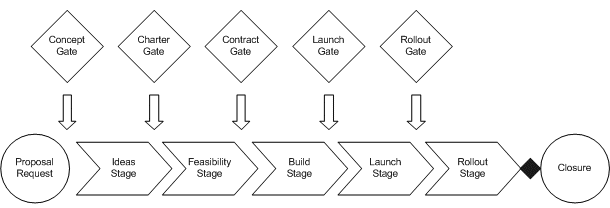IT Project Management | By Duncan Haughey | Read time minutes

Have you ever wondered how much time and money large organisations spend developing or buying duplicate software applications because they do not know they have already purchased or developed a suitable application?
Experience and research suggest that organisations (particularly large decentralised organisations) spend a significant part of their IT budget on unnecessary duplication. What if we put this money to more effective use elsewhere or use it to improve the quality of the current application development?
A large multinational company I work for had just this problem, developing multiple room booking systems of varying quality. For the money spent, they could have produced or bought one truly world-class solution.
The problem is that many organisations do not have information about their IT inventory documented and readily available, so they remain unaware of the problem. To address this, consider these three distinct areas:
- Availability of information
- Approval process
- Cultural change
Without information about what IT development projects are producing, organisations will continue to reinvent the wheel, largely unaware of the wasted IT budget. We need an Application Inventory accessible by everyone to give visibility to the organisation's application portfolio. Alongside the inventory, a suitable approval process will ensure we do not start projects where a good reuse alternative is available. There is a need for cultural change where before proposing or beginning a project to ask what exists? There needs to be more credit for reusing or adapting existing applications than creating new ones to support this.
Application Inventory
Creating an application inventory is no easy task but a necessary first step in avoiding duplication. There are two valuable approaches; architectural or project-based:
1. Architectural Approach
Taking the architectural approach means mapping all your applications, business processes and technologies. After developing or buying each new application, add it to the inventory with information such as what it does, who the internal customer is, and the technology it uses.
2. Project-Based Approach
Using the project-based approach means building up information about applications from project data supplied by the organisation's project managers. The ideal scenario is where this information comes from the organisation's project portfolio management system, keeping the overhead for collecting data to a minimum.
Once you have created your inventory, it is vital to make it available - websites and web-based applications are ideal for making information easily accessible.
Approval Process
The stage and gate method is an efficient process for evaluating project proposals by passing them through a series of gates to assess their value and relevance to the organisation. Unlike many traditional methods, after approval at the beginning of its life, a project runs unhindered to a conclusion; the stage and gate method assesses a project at several points during its life. This way, the organisation confirms the expected benefits are still relevant, and the project will still deliver good value. If not, they stop the project before its conclusion, saving money and allowing the use of resources to more significant effect elsewhere.

- The Concept Gate gives visibility of planned projects and an opportunity to find actual or potential duplication areas.
- The Decision Gates are Charter, Contract and Rollout - these are go-no-go gates.
- The Quality Gate is the Launch Gate used to check quality and completeness.
- Not all decisions are at Gates - there will be exceptions.
Checking for existing suitable applications should be part of the project approval process at the concept and charter gate, supported by your gatekeepers (approvers) and Project Management Office.
Cultural Change
Many organisations suffer from the not invented here syndrome. Developers like to create and are not keen on reusing. When this happens, people spend more time justifying why they cannot use an existing application than why they can.
Ideally, customers should check the organisation's application inventory to see what meets their needs before proposing a project. More realistically, the project manager will do this when given the project. There needs to be more credit for reusing or adapting existing applications than creating new ones. A helpful phrase to describe this is - steal with pride. Reuse is not stealing as long as you do not infringe any copyright or licencing agreements.
The benefits of application reuse are:
- Higher quality (a tried and tested solution).
- Less rework (bugs already found and removed).
- Lower cost (changes and configuration work only).
- Shorter duration (more of the customer requirements already met).
- Greater customer satisfaction (fewer bugs and the route to a faster solution).
- Simplification (less complexity in the organisation's application portfolio).
Here are the steps organisations can take to lessen duplication:
- Create an application inventory - map all your applications, business processes and technologies.
- Make the inventory available on your Intranet for easy access.
- Avoid the not invented here syndrome by positively encouraging and rewarding reuse.
- Introduce a project approval process and use it to find and remove duplication.
- Use your Project Management Office and gatekeepers to support (and, if necessary) enforce the initiative.
It will take time and effort to make this work within your organisation, but be patient, and the rewards can be significant.
Recommended read: Managing IT Projects Offshore: The Project Manager's Perspective by Duncan Haughey.